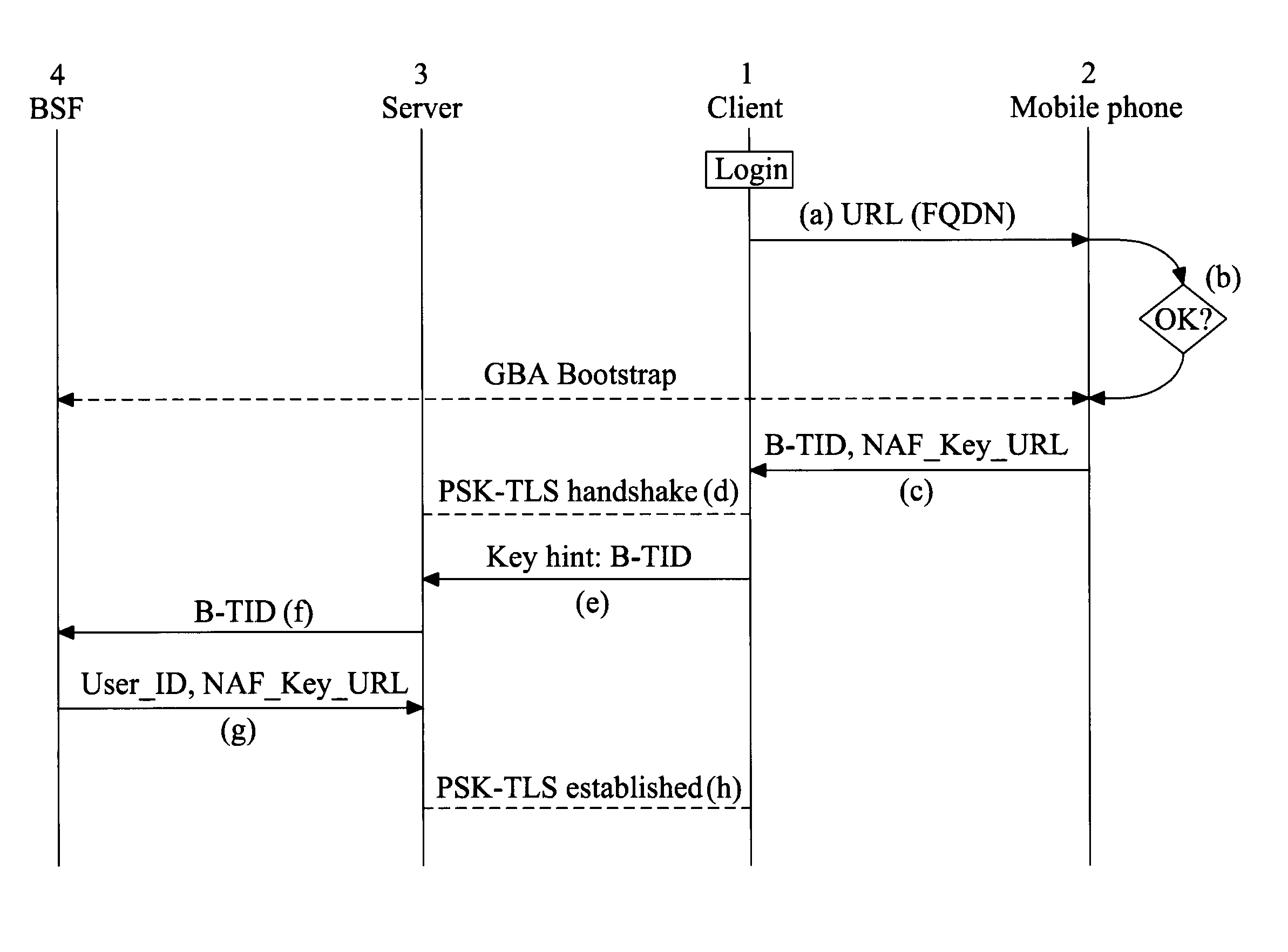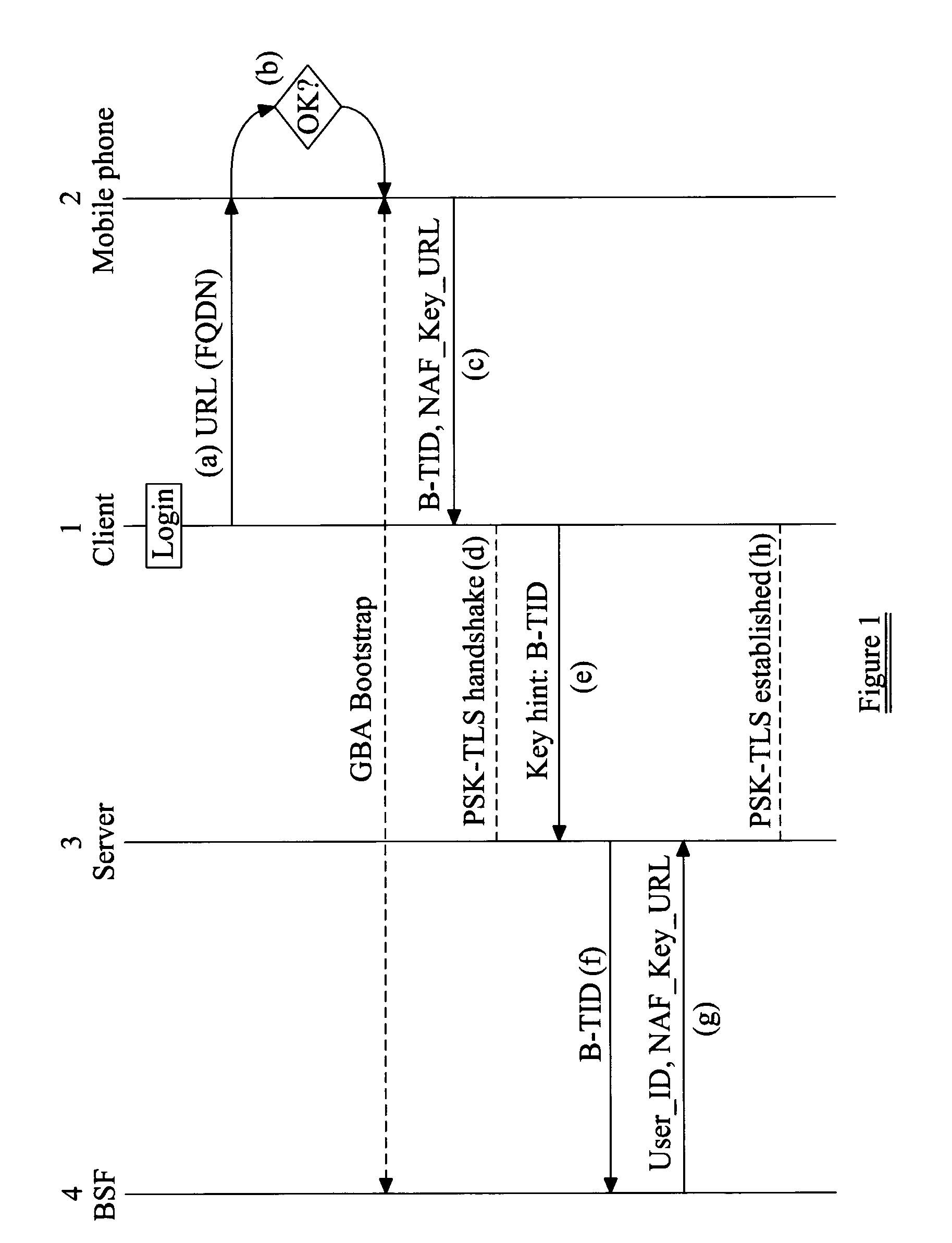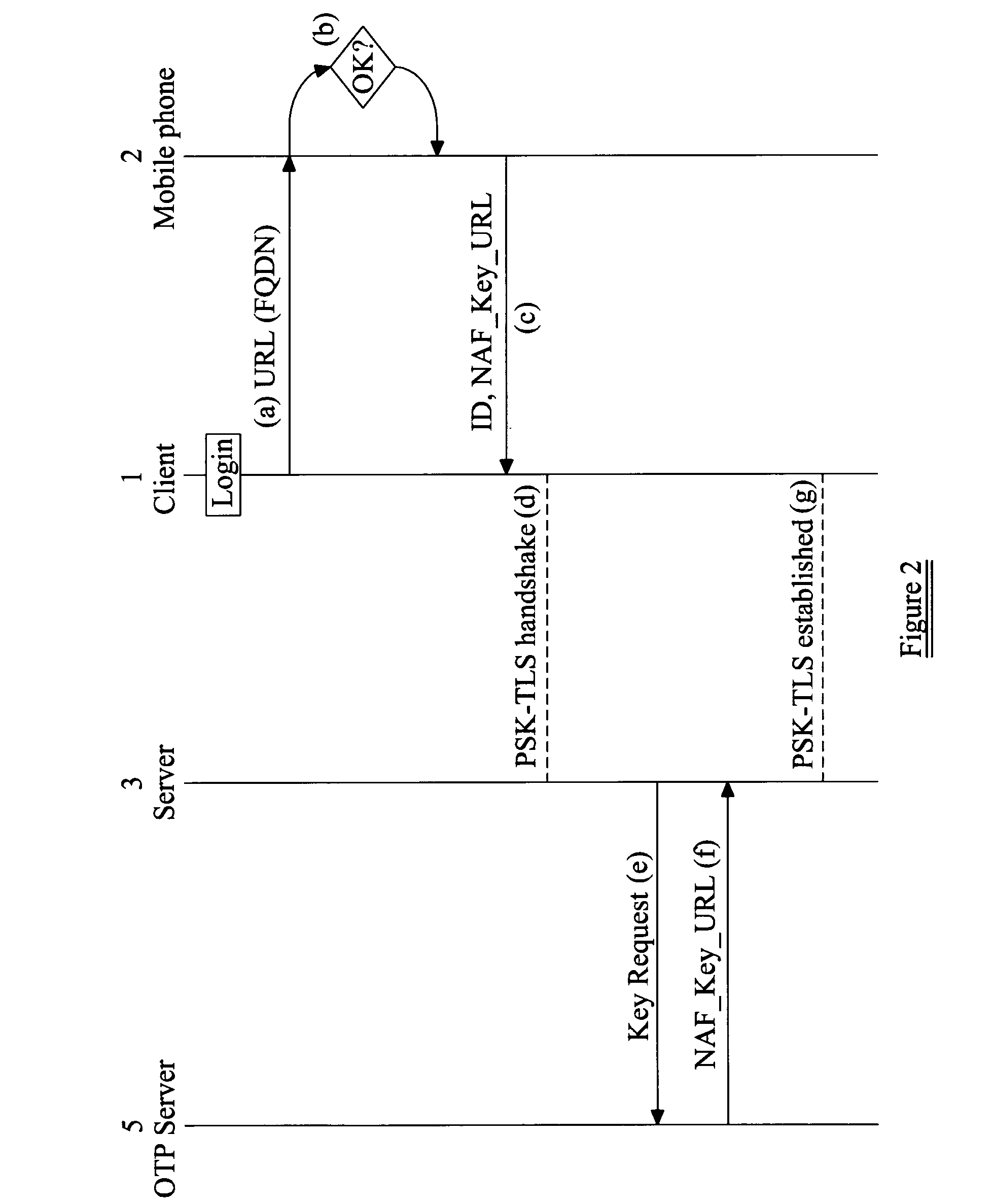User authentication
a user authentication and user technology, applied in the field of user authentication, can solve the problems of loss of security, cumbersome user authentication when logging into web pages and applications, and manual verification of urls or security indicators such as certificate owners for most users, and achieves the effect of improving security and user experien
- Summary
- Abstract
- Description
- Claims
- Application Information
AI Technical Summary
Problems solved by technology
Method used
Image
Examples
first embodiment
[0067]FIG. 1 illustrates the principal steps of a method relying on GBA, of the present invention.
[0068]Step 1 When the user behind their desktop / laptop computer connects to a server that implements the method of the present invention (and the server may indicate this to a user, for example by showing a certain login banner), the client 1 of the user's computer terminal notices that the server supports the invention (for example by means of a special header page that is returned by the server hosting the service, or by special decorators contained in the address or identifier for the service (e.g. a URL of a web-page)). Another option is that the server displays the different authentication options it supports and the user selects which one to use; as a further option the server may provide the client 1 with an indication of which authentication option(s) it supports. When the client notices this, it activates the near field device of the user's computer terminal, thereby enabling ...
second embodiment
[0088]Moreover, although the above embodiment uses GBA-based key establishment the invention is not limited to this. FIG. 2 shows a method according to the present invention in which the mobile telephone generates a one-time password (OTP) rather than using GBA-based key management. Use of a OTP may provide further security, since each key is used only once and so cannot be re-used by a third party.
[0089]The method of FIG. 2 proceeds initially according to steps 1-5 of the method of FIG. 1, and further description of these steps will not be repeated.
[0090]Step 6a This embodiment of the present invention requires that the mobile telephone 2 has a one-time password generator. Once the user has given their consent to the key generation, the one-time password generator in the mobile telephone 2 generates a base key. Preferably, this base key is then transformed to depend upon the service identity of the requested service in a way similar to how it is done in the GBA based embodiment, fo...
third embodiment
[0096]FIG. 3 illustrates a method according to the present invention. This embodiment relates to a challenge response-based method.
[0097]The method of FIG. 3 initially proceeds in the manner described above with reference to steps 1 to 4 of the method of FIG. 1, and the description of these steps will therefore not be repeated.
[0098]Step 5b The client 1 then sends the user ID to the server 3 hosting the service requested by the user, and requests a challenge for authentication purposes. This is step c of FIG. 3.
[0099]Step 6b The client 1 also sends the user ID to a challenge response server (CR server) 6, and requests an authentication vector containing a key that preferably has been transformed to be dependent on the service identity of the requested service, for example using a cryptographic hash function. The authentication vector also contains at least a challenge and an expected response. After the server 3 has received the authentication vector from the CR server 6 (step e), i...
PUM
 Login to View More
Login to View More Abstract
Description
Claims
Application Information
 Login to View More
Login to View More - R&D
- Intellectual Property
- Life Sciences
- Materials
- Tech Scout
- Unparalleled Data Quality
- Higher Quality Content
- 60% Fewer Hallucinations
Browse by: Latest US Patents, China's latest patents, Technical Efficacy Thesaurus, Application Domain, Technology Topic, Popular Technical Reports.
© 2025 PatSnap. All rights reserved.Legal|Privacy policy|Modern Slavery Act Transparency Statement|Sitemap|About US| Contact US: help@patsnap.com



